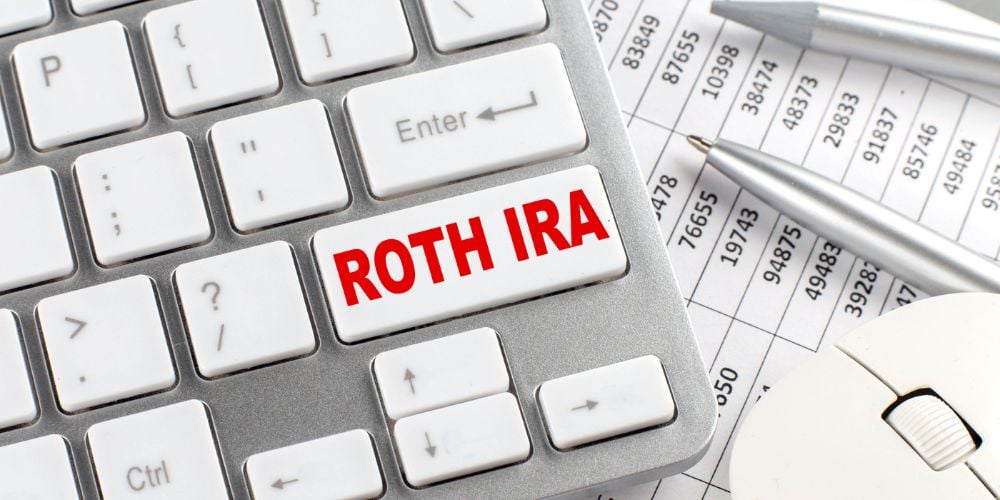Day trading involves buying and selling securities within the same day, targeting small but frequent profits.
A Roth Individual Retirement Account (IRA) stands out as a powerful tool for tax-free growth and retirement savings.
Merging these two concepts, day trading in a Roth IRA, presents a unique strategy. This guide unpacks the intricacies of harnessing the potential of a Roth IRA for day trading, focusing on maximizing tax-free earnings for retirement.
Day Trading in a Roth IRA?
Tax-free gains represent the most enticing benefit of a Roth IRA. Unlike traditional retirement accounts, where withdrawals are taxed, Roth IRA earnings can be withdrawn tax-free in retirement.
For day traders, this means the profits from their trading activities grow tax-free, leveraging the power of compound interest to the fullest. Additionally, Roth IRAs come without required minimum distributions (RMDs), offering the flexibility to grow investments for an extended period.
Another noteworthy advantage is the flexibility in contributions and withdrawals. While direct contributions to a Roth IRA are limited and governed by income levels, investors can withdraw their contributions (but not the earnings) at any time, without penalty.
This feature can provide a financial cushion, making Roth IRAs highly appealing for traders looking to balance accessibility with growth.

Rules and Regulations
Trading within a Roth IRA requires an understanding of specific IRS rules. While day trading is permitted, the IRS imposes strict regulations to prevent abuses.
One key rule involves “prohibited transactions,” which can trigger severe tax penalties and disqualifications of the Roth IRA. Contributions to a Roth IRA are also capped annually, with limits that can change yearly and vary based on age and income.
Exceeding these contribution limits can lead to penalties, underscoring the importance of meticulous financial planning and awareness of IRS guidelines.
Strategies for Day Trading in a Roth IRA
Diversification and risk management are critical strategies for traders keen on protecting their Roth IRA assets.
Unlike a typical trading account, the stakes in a Roth IRA are higher due to its intended purpose for retirement.
Therefore, maintaining a diversified portfolio reduces the risk of significant losses. Setting realistic goals and adopting a long-term mindset are vital.
Day trading can be volatile, and traders should resist the temptation to overly risk their retirement funds on short-term market movements.
Furthermore, integrating technical analysis can sharpen trading decisions, aiding in the identification of market trends and entry or exit points.
Important Considerations
Day trading in a Roth IRA is not without its challenges. The required time commitment and emotional resilience are significant.
Markets are inherently volatile, and the short-term focus of day trading can amplify risks, potentially endangering retirement savings if not approached judiciously. It is advisable for individuals to seek professional financial advice to navigate these complexities.
Financial advisors can offer tailored guidance, ensuring that trading activities align with broader retirement planning goals.
Understanding the Unique Structure of a Roth IRA
A Roth IRA is a retirement savings account that allows your money to grow tax-free. Eligibility to contribute depends on your income level, with maximum contributions limited annually.
Contributions are made with after-tax dollars, meaning withdrawals during retirement are tax-free, adhering to specific conditions and regulations set by the IRS.
This unique structure is designed to benefit investors who anticipate higher tax rates in the future.

Frequently Asked Questions
What makes trading in a Roth IRA different from a traditional IRA?
Trading in a Roth IRA offers tax-free growth and withdrawal benefits, in contrast to the deferred tax advantages of a traditional IRA. This distinction can significantly impact the long-term outcome of trading gains.
Are there any trade limitations specific to IRAs?
Yes, the IRS imposes rules that limit certain trading practices within IRAs, such as short-selling and purchasing securities on margin, to protect retirement savings from excessive risk.
What happens if I exceed contribution limits?
Exceeding contribution limits can result in penalties, including a 6% tax on excess contributions for each year they remain in the account.
Is leveraging or margin trading allowed in a Roth IRA?
Generally, IRAs prohibit using borrowed money to buy securities, which means leveraging and margin trading are typically not allowed. This rule helps safeguard retirement funds from the high risks associated with these trading strategies.
What are the tax implications of day trading in a Roth IRA?
The primary appeal of a Roth IRA is its tax-free growth potential. As long as the account holder adheres to the rules, day trading within a Roth IRA does not lead to immediate tax consequences, and qualified distributions are tax-free in retirement.
Conclusion
Day trading in a Roth IRA merges the fast-paced world of day trading with the strategic long-term goal of tax-free retirement savings.
While it offers a path to potentially accelerate account growth, it demands a disciplined approach, mindful of the rules, risks, and the inherent volatility of the markets.
With careful planning and a commitment to informed decision-making, day traders can leverage a Roth IRA to not only pursue short-term gains but also secure their financial future in retirement.


 Tags:
Tags:










